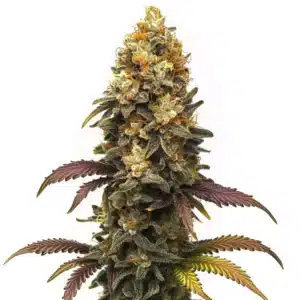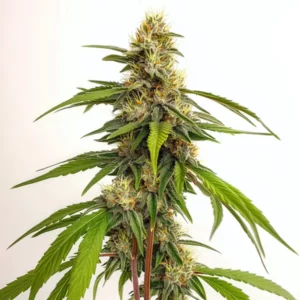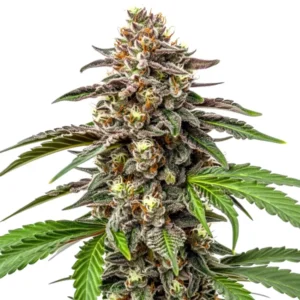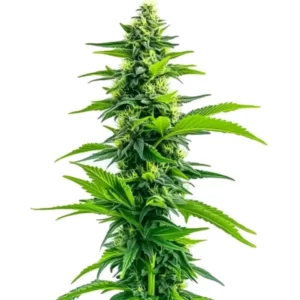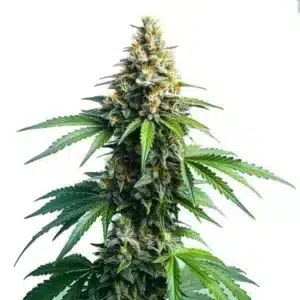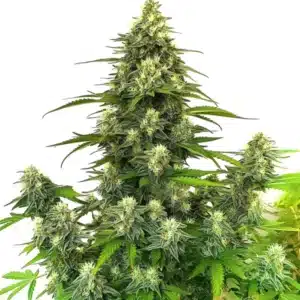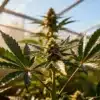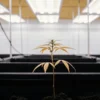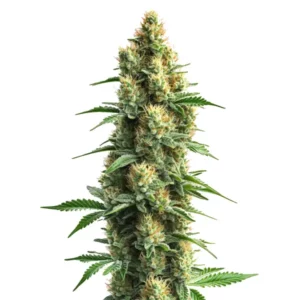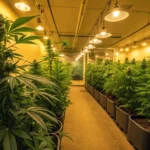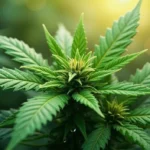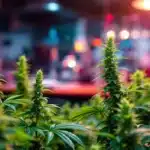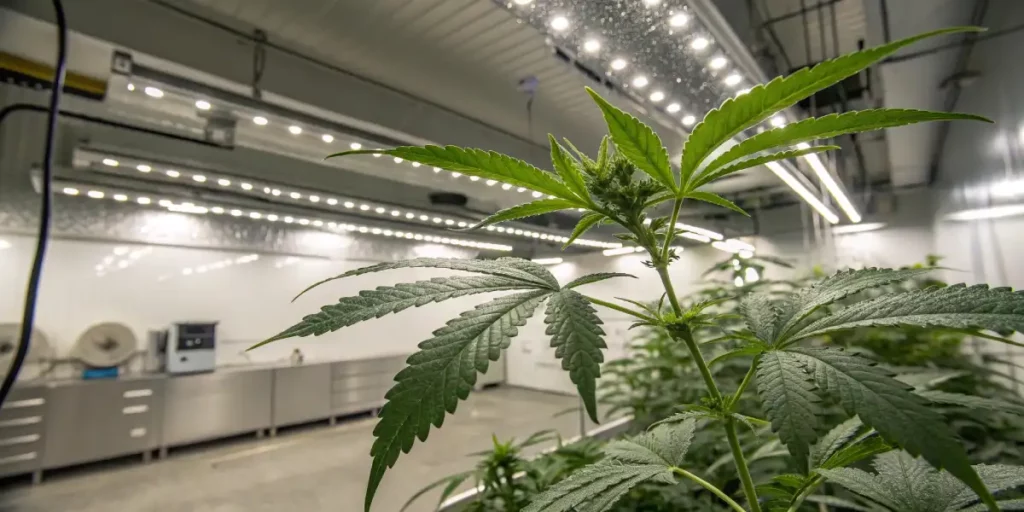
Cannabis Guttation: A Close Look At This Unique Process
Guttation in cannabis refers to a natural phenomenon where the plant releases surplus moisture, typically as droplets forming at the edges or tips of the leaves. This usually occurs when the roots take in more water than the plant can release, particularly at nighttime or in highly humid conditions. Although this process is usually not harmful, frequent guttation may signal potential issues like overwatering or nutrient imbalances.
Whether you are a first-time cannabis seed buyer or an experienced grower, knowing about guttation can help you better care for your plants. It’s simply a natural action performed by the plant to maintain balance. However, this doesn’t mean it can be ignored, as it can have impacts on your yield and plant health.
Recommended Strains
Guttation Explained: From A to Z
You might have noticed small droplets of water on the edges of your cannabis plant’s leaves. This is guttation. The plant is essentially “sweating,” releasing excess water and nutrients through tiny openings in its leaves. This natural process usually occurs when the soil is overly moist and the humidity is high.
While guttation may seem harmless, it can have certain implications. It’s an indication that your plant might be taking in more water than it can use. This can be a result of overwatering, poor soil drainage, or high humidity. The key to managing guttation lies in identifying the root causes. Remember, guttation is not evaporation or transpiration; it is purely a method for the plant to get rid of excess water.
The Impact of Guttation on Cannabis Plants
Cannabis guttation can have a significant impact on your plants. The first is on the plant’s hydration levels; when a plant undergoes guttation, it loses water. Secondly, it can lead to nutrient loss, as the plant also excretes minerals. This can lead to stunted growth or yellowing leaves.
Lastly, guttation can also attract pests. The sweet, nutrient-rich water that the plant excretes can attract pests like aphids and spider mites, which can cause significant damage. While guttation can occasionally be beneficial in ridding the plant of excess water, regular guttation should be taken as a sign that your cultivation practices may need adjustment.
Promos & Deals
Preventing Guttation in Cannabis Growth
Now that we’ve discussed the impact of guttation, let’s talk about how to prevent it. The key is to manage your watering and humidity levels effectively, as overwatering and high humidity are the main triggers.
It also involves creating the right environment for your plants. This includes ensuring proper ventilation to reduce humidity levels. If you notice guttation, you should increase both your air extraction and internal ventilation to the maximum, especially during the late flowering stage. The droplets from guttation are a clear sign of excess humidity, which can lead to mold and ruin your harvest right at the end.
Covering the soil with a layer of mulch is another good solution if the problem persists. A mulch of bark chips or similar material helps regulate the moisture level of the topsoil, meaning you will need to water less often and can more easily avoid creating the overly moist conditions that cause guttation.
For more advanced control, some growers adjust their watering pH. If guttation occurs, it can be a sign that root pressure is too high. It is important to lower the irrigation pH a bit, to around 5.5, if this happens. This can help regulate nutrient and water uptake, which may help to prevent further guttation.
One good practice is to water your plants early in the morning. This gives the water enough time to be absorbed by the plants before the lights go out and the humidity rises.
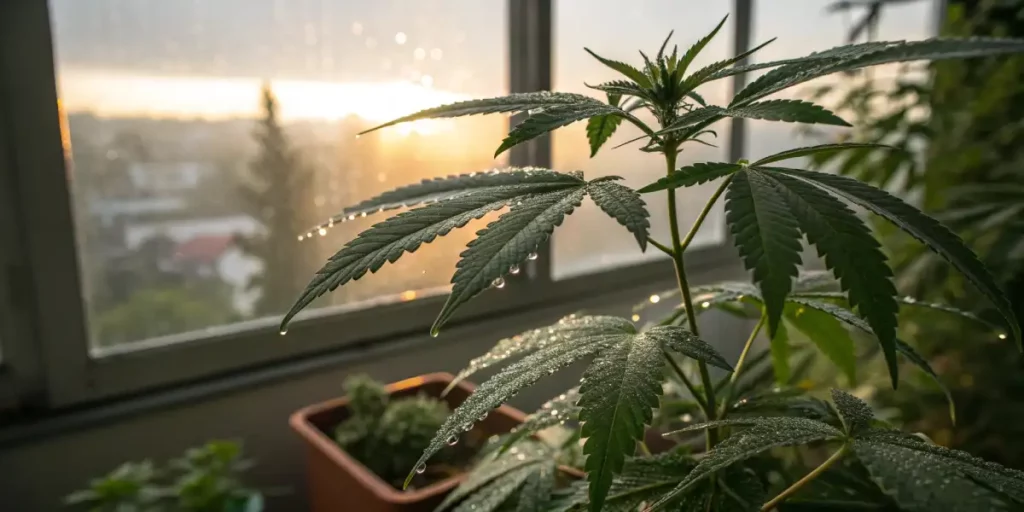
Choosing the Right Cannabis Strains
In addition to managing your watering and humidity, choosing the right cannabis strains can also help. Some strains are more resistant to guttation than others. For example, the BC Diesel strain from Blimburn Seeds is known for its resistance. Another strain worth considering is the Orka strain. However, remember that even the most resistant strains can still experience guttation if not properly cared for.
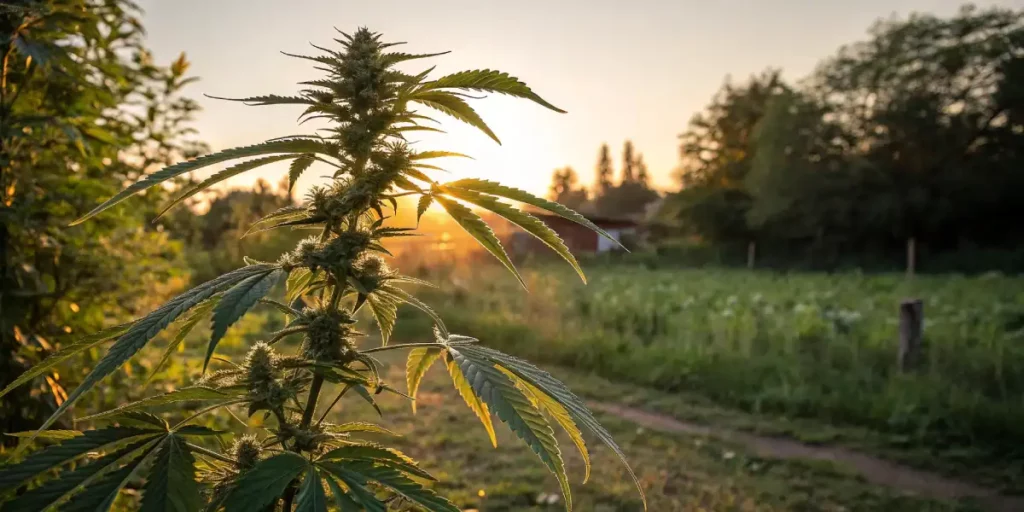
FAQs Section
What is cannabis guttation?
Cannabis guttation is a process where cannabis plants excrete excess water from their leaves. It usually occurs when the soil is overly moist and the humidity is high. While this is a natural process, it can have certain implications for the health and growth of your cannabis plants.
Guttation can lead to water and nutrient loss, and it can also attract pests. Therefore, it’s important for growers to understand this process and manage it effectively.
Guttation is a natural physiological process that’s more common in young plants than in mature ones. It’s important to keep an eye on this process, especially during the early stages of growth, as it can give you valuable insights into the health of your plants. Regular monitoring can also help you take timely action to prevent any potential negative effects of guttation on your plants.
When it comes to cannabis guttation, it’s important to remember that not all dew or moisture on your plant’s leaves is guttation. Morning dew, for instance, is moisture from the air that condenses on the plant’s surface. It’s not excreted from within the plant like the water from guttation. Therefore, before taking any action, make sure that what you’re seeing is indeed guttation and not simply dew or other moisture.
How can I prevent guttation in my cannabis plants?
The key to preventing guttation in your cannabis plants is to manage your watering and humidity levels effectively. Overwatering and high humidity are the main triggers for guttation. Therefore, you should monitor your watering practices and the environmental conditions in your grow room.
Water your plants early in the morning to give the water enough time to be absorbed by the plants before the lights go out and the humidity rises. Also, avoid watering your plants just before the lights go out as this can create a humid environment that encourages guttation.
Another important aspect of preventing guttation in cannabis growth is knowing your plants’ water requirements. Different cannabis strains may require different amounts of water, and the water needs of your plants can also change depending on their stage of growth. Therefore, it’s important to adjust your watering practices based on the specific needs of your plants at any given time.
Finally, remember that prevention is always better than cure. While it’s possible to manage guttation once it occurs, it’s much easier and better for your plants if you can prevent it from happening in the first place. This involves careful monitoring of your plants and their environment, and making necessary adjustments to your cultivation practices as needed.
Are some cannabis strains more resistant to guttation than others?
Yes, some cannabis strains are more resistant to guttation than others. For example, the BC Diesel strain from Blimburn Seeds is known for its resistance to guttation. Other resistant strains include the Orka and Gorilla strains, also from Blimburn Seeds.
Choosing a strain that is resistant to guttation can help you avoid the problems associated with this process, such as water and nutrient loss and pest attraction.
Knowing the genetic makeup of your cannabis strains can go a long way in helping you manage guttation. Some strains are naturally more prone to guttation due to their genetic predisposition. By choosing strains that are less prone to guttation, you can reduce the likelihood of facing issues related to this process. However, it’s also crucial to remember that proper care and cultivation practices are equally, if not more, important in preventing guttation.
It’s also worth noting that while some strains may be more resistant to guttation, no strain is completely immune. Therefore, even if you’re growing a strain that’s known for its resistance to guttation, you should still monitor your plants regularly and take necessary steps to manage their water intake and environmental conditions.
Can guttation attract pests?
Yes, guttation can attract pests. The sweet, nutrient-rich water that the plant excretes can attract pests like aphids and spider mites. These pests can cause significant damage to your cannabis plants, affecting their health and yield.
To prevent pest attraction, it’s important to manage your watering and humidity levels effectively. Also, choosing a strain that is resistant to pests can help.
When it comes to cannabis guttation and plant health, it’s crucial to keep in mind the potential for pest attraction. The droplets excreted during guttation are rich in sugars and other nutrients, making them a popular food source for various pests. By controlling guttation, you can reduce the risk of attracting pests to your plants. Regularly inspecting your plants for signs of pests can also help you catch any potential infestations early and take action before they cause significant damage.
Lastly, remember that while guttation can attract pests, it’s not the only factor that can do so. Other factors like poor sanitation, lack of air circulation, and improper pest management can also lead to pest infestations. Therefore, thorough pest management should be a key part of your cannabis cultivation strategy.
Can guttation affect the health of my cannabis plants?
Yes, guttation can affect the health of your cannabis plants. Guttation can lead to water and nutrient loss, which can result in stunted growth, yellowing leaves, and other signs of nutrient deficiency. It can also attract pests, which can cause significant damage to your plants.
To ensure the health of your plants, it’s important to understand the cannabis guttation process and manage it effectively. This includes managing your watering and humidity levels and choosing the right strains.
Knowing the cannabis guttation process and its effect on plant health is a crucial part of cannabis cultivation. It’s not just about preventing guttation, but also about recognizing the signs and knowing how to respond effectively. By doing so, you can ensure that your plants remain healthy, vibrant, and productive throughout their life cycle.
Finally, it’s important to keep in mind that while guttation can affect the health of your cannabis plants, it’s just one of many factors that can do so. Other factors like light, temperature, nutrients, and pests can also significantly impact your plant’s health. Therefore, a well-rounded approach to cannabis cultivation that takes into account all these factors will be most effective in ensuring the health and productivity of your plants.


